Sarita Damle was skeptical. Could an AI-powered mobile phone app really help rural farmers in central India improve crop yields?
As a mother of two, an agriculture extension agent, and a farmer herself of maize, lentil, wheat and other crops, Damle had no time to waste on unreliable or irrelevant projects. She relied on the tried-and-trusted tradition of community-based farmer-to-farmer advice.
It took a pest infestation on her own farm in Kasda Khurd village in Madhya Pradesh to convince her that the Farmer.Chat app might be a useful partner. It promptly gave her information about how to treat her fields both chemically and organically.
She chose the organic route and followed the instructions. It worked.
A convert was born.
“This will revolutionize the way farming is done in India,” said Nandita Mishra, Senior Program Manager for Training for Digital Green, the non-profit that developed the app in 2023. “All around the world, we see a food crisis lurking in front of us. We see compromised soil, people migrating.”
With this app, you hold the future in your hands.
Nandita MishraSenior Program ManagerDigital Green
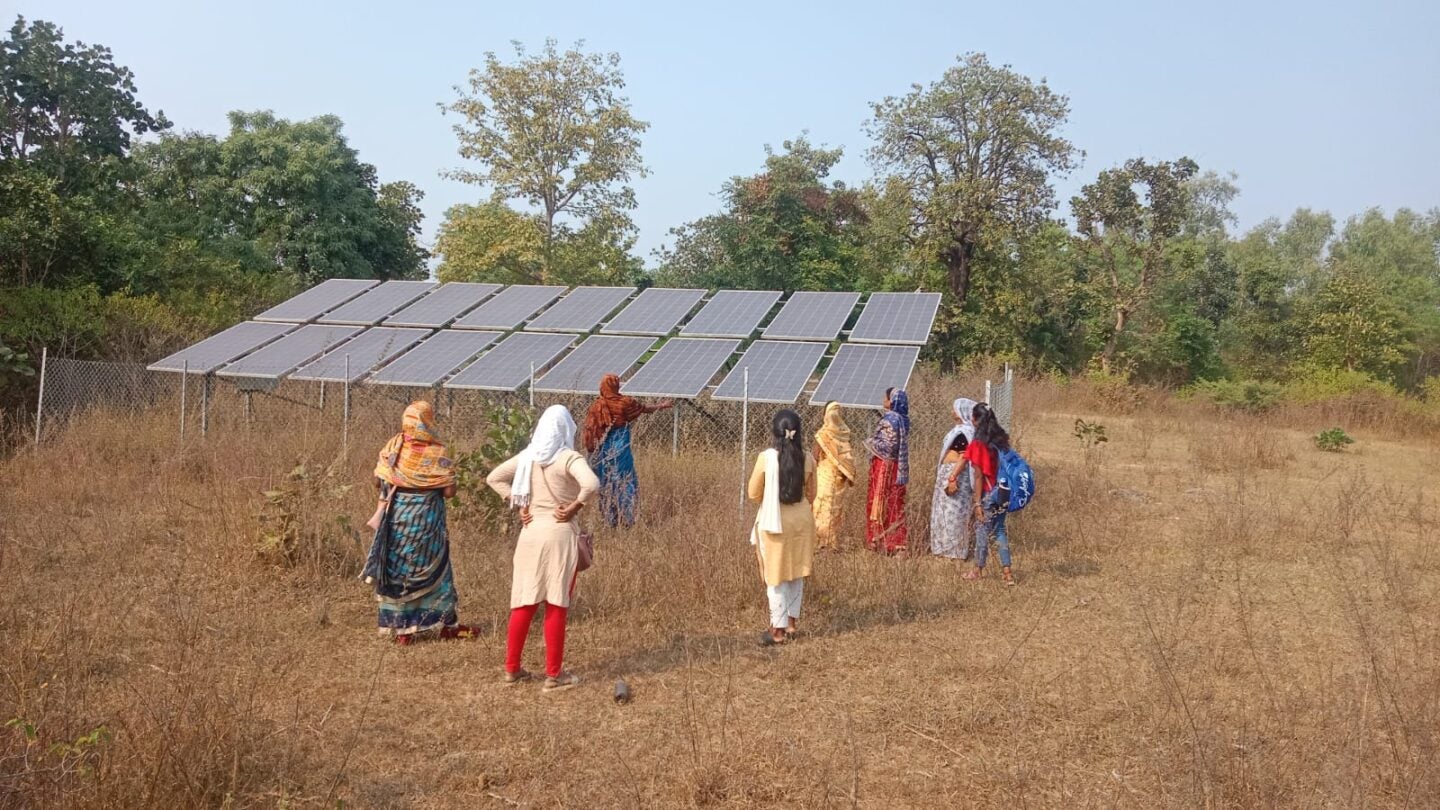 Farmers in Bihar, India, receive training on the use of a solar-powered groundwater pump to support crop irrigation. (Photo Courtesy of Sarita Damle and Digital Green)
Farmers in Bihar, India, receive training on the use of a solar-powered groundwater pump to support crop irrigation. (Photo Courtesy of Sarita Damle and Digital Green)
Rural Farmers Get Regenerative Agriculture Advice
Digital Green was founded on the belief that technology can help end poverty and meet the climate challenge. Through other digital projects, Digital Green has reached over 6 million rural farmers, 60 percent of whom are women, creating a 24 percent increase in small-scale farmer profits.
Farmer.Chat, created in partnership with OpenAI, is linked to a digital public infrastructure led by the Indian government known as VISTAAR (Virtually Integrated Systems to Access Agricultural Resources).
It was initially rolled out in mid-2023 to more than 5,000 field-level agriculture extension workers in five states: Bihar, Madhya Pradesh, Rajasthan, Uttar Pradesh, and Jharkhand.
These first users provided valuable feedback on functionality and identified gaps between farmers’ questions and the available content. They also received instantaneous responses on challenges specific to their farm, drew on a significant library of farmer-to-farmer videos, and gave feedback on the quality of the answers they received.
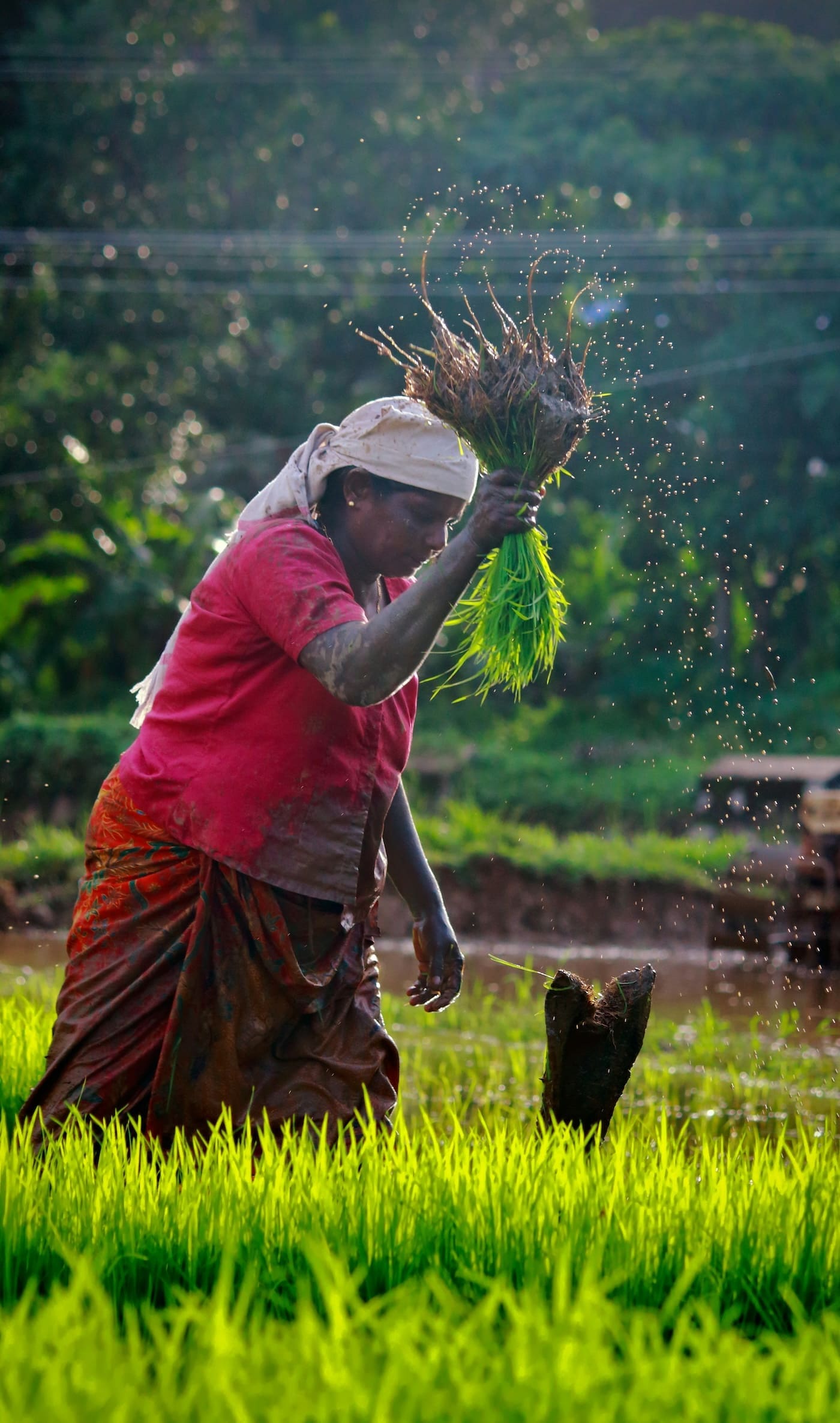
Woman farmer works in a paddy field in Nedumangad, India. (Photo Credit Nandhu Kumar, Unsplash)
The Rockefeller Foundation is now supporting efforts to operationalize the app through the extension agents who provide advice and support to farmers, with a focus on advancing regenerative agricultural practices. As features are developed, farmers will be able to contribute their own content to the network.
The project started in Bihar, one of India’s leading producers of fruits and vegetables, where roughly 75 percent of the state’s 100 million population is involved in agriculture.
Bihar faces significant challenges, with a 34 percent multidimensional poverty rate, the highest in India. Apart from maize and pulses, crop productivity in Bihar falls well below the national average.
Learnings from the Bihar effort will inform the scale-up of the model nationally in India, as well as adaption and replication in other countries; since its launch, 12,000 extension agents in India, Kenya, and Nigeria have adopted Farmer.Chat, serving 500,000 farmers.
“Farmer.Chat is making it easier and less expensive for agricultural extension agents to provide smallholder farmers in India with timely, accurate data about where to grow specific crops and how to protect them from drought and disease,” said Anna Makanju, Vice President of Global Affairs at OpenAI.
“The app allows farmers to access agricultural content, including farmer-generated videos of resilience practices, in the very languages they speak,” she added.
“This work is a testament to the power of collaborative grant-making inside the Foundation,” noted John de la Parra, Director, Global Food Portfolio, The Rockefeller Foundation. “By uniting the expertise and resources of our Food and Innovation teams, along with that of Digital Green and the vibrant communities they serve, we are helping to build a future where sustainability and technology can advance together to equitably support communities becoming more resilient, self-sustaining, and connected to their environments, cultures, and traditions.”
“Over a quarter of the global population earns their livelihood from agriculture, supplying vital nourishment to communities worldwide,” added Andrew Sweet, Vice President, Innovation, The Rockefeller Foundation. “Yet farmers confront a wide swath of challenges posed by climate change, while often being excluded from technological advancements.”
This work promises to simultaneously tackle global health and food crises, mitigate the impact of climate change by spreading regenerative practices, and advance equity.
Andrew SweetSenior Vice President, InnovationThe Rockefeller Foundation
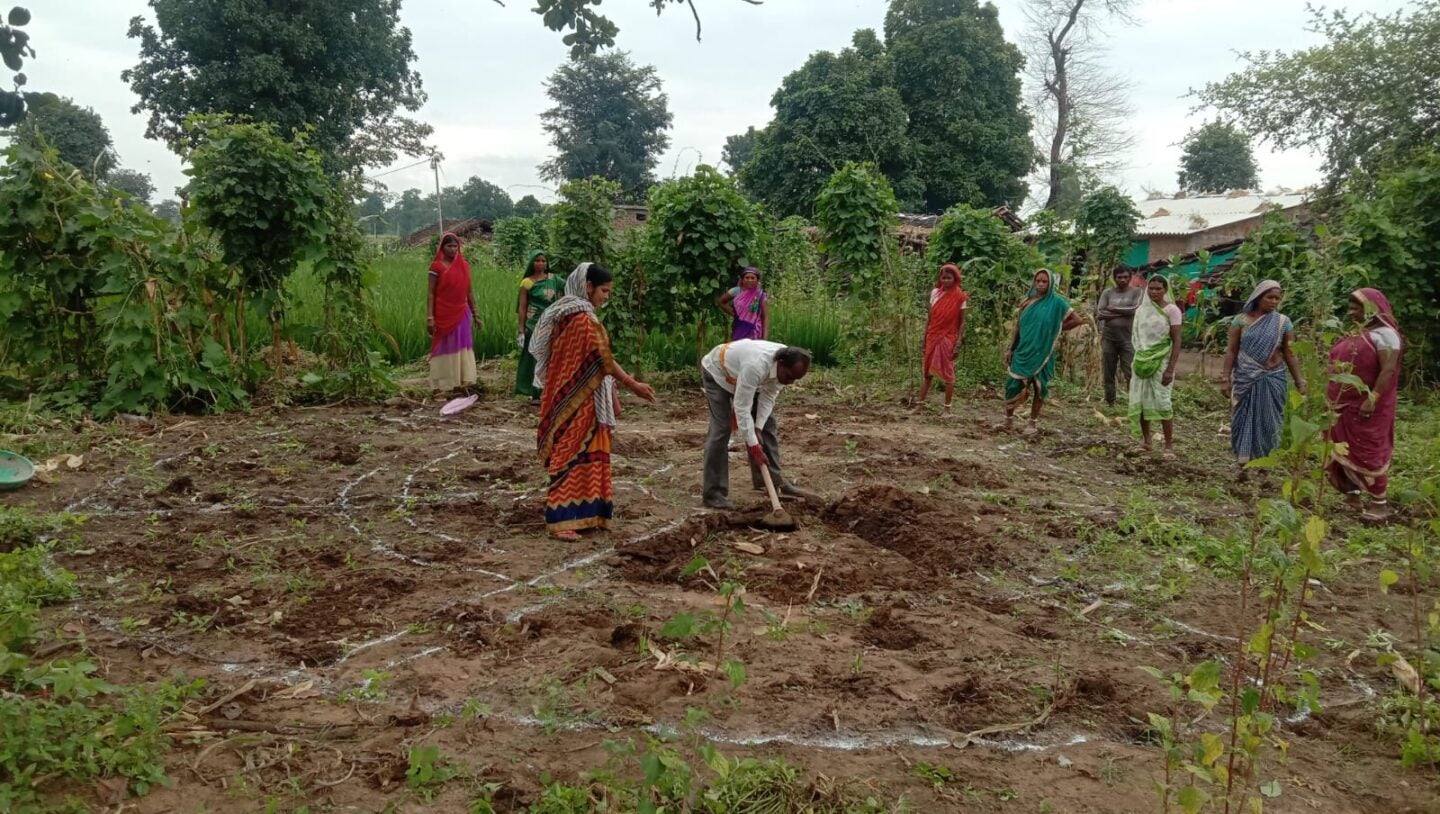 Farmers gather in Bihar, India to be trained on the use of manure as fertilizer. (Photo Courtesy of Sarita Damle and Digital Green)
Farmers gather in Bihar, India to be trained on the use of manure as fertilizer. (Photo Courtesy of Sarita Damle and Digital Green)
What Soil Depletion Looks Like
Farmers have an intimate way of talking about the soil’s depletion: land they once turned easily has grown hard. Even tractors struggle to till.
The condition has been worsened by irregular climate patterns, which also cut into farmers’ small profits and create a vicious cycle that makes a shift to regenerative practices that much more challenging and urgent.
“In the summer now, it rains too much and the roots rot,” Damle said. “During winter, severe conditions have started to prevail, so the flowers wilt and we don’t get the grains or vegetables, just the vegetative growth. Then the family desperately purchases more fertilizer and other inputs, and the cost increases, and they face a debt crisis.”
Farmers are adopting “natural practices” for their kitchen gardens, but don’t feel confident enough to adopt for commercial produce, noted Rajkumar Leve, who grew up in a farming family and now serves 1,000 farmers as an agriculture extension agent in and around Shajapur, a town about 165 miles (265 kilometers) northwest of Damle’s home.
“When they shift to natural techniques, initially their production is reduced for a couple years. And their profit margins are so slim that they can’t afford that,” he said. “It’s definitely the way forward, but acceptance will be gradual.”
Since more than half the Earth’s habitable lands are used for food production, experts say nature-based farming practices—like reduced tilling and cover cropping—can make a powerful contribution to carbon removal globally.
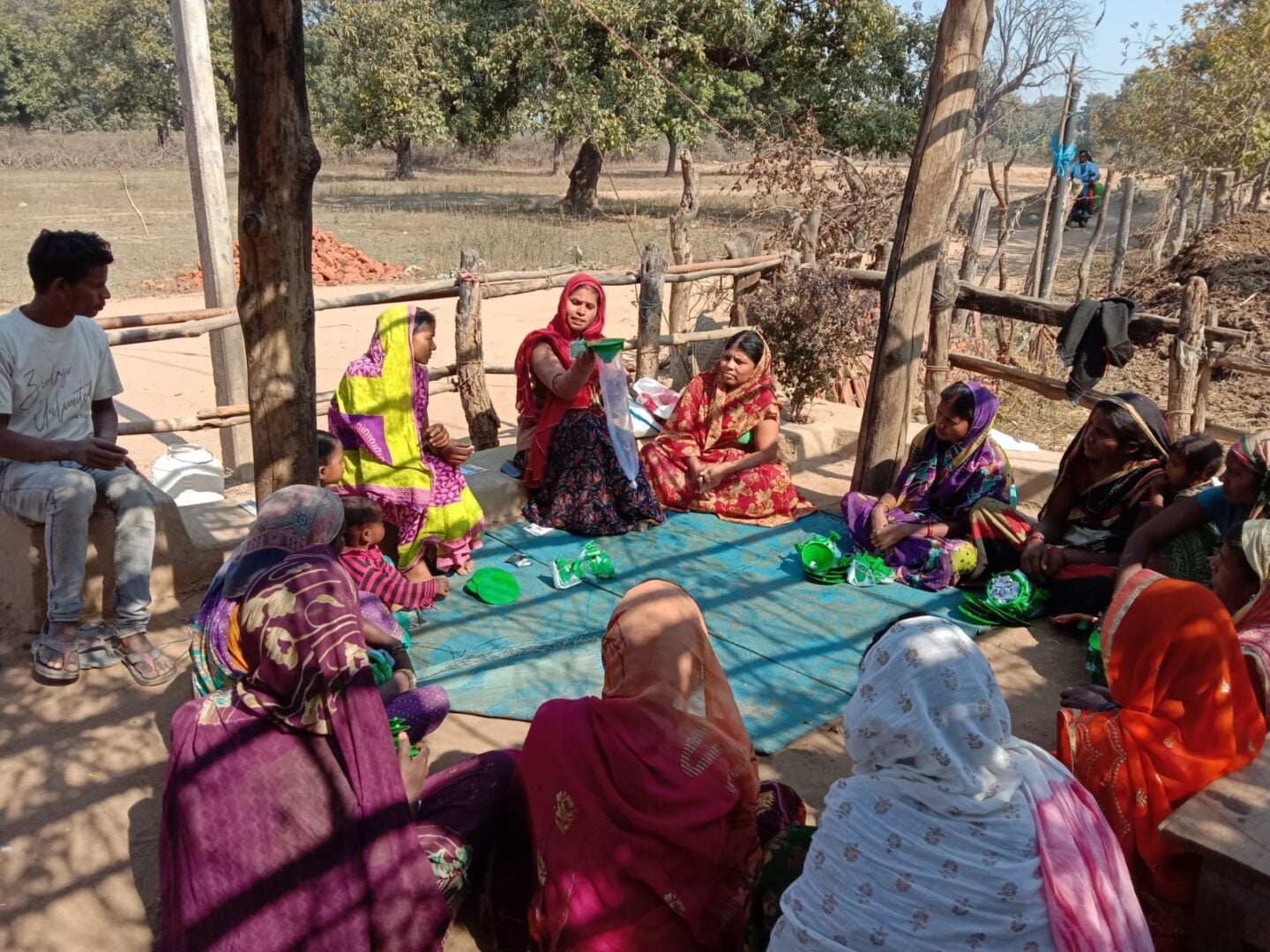 Women farmers gather in the heat of the day for a training session on the use of pheromone traps for insect control in Bihar, India. (Photo Courtesy of Sarita Damle and Digital Green)
Women farmers gather in the heat of the day for a training session on the use of pheromone traps for insect control in Bihar, India. (Photo Courtesy of Sarita Damle and Digital Green)
Supporting Extension Agents in Triaging Problems
In a system where the ratio of farmers to extension agents is often very high, Farmer.Chat allows agents to reach rural farmers quickly and triage needs with multimedia inputs and responses.
The ability for farmers to provide feedback also enables them to share their own innovations as they combat climate change—innovations that can inform broader research and policy. Farmers are able to interact using text and voice notes in six languages so far, which makes it more accessible and helps overcome digital literacy barriers.
Farmer.Chat can even serve as an early warning system through faster pest, disease, weather, and risk identification due to a tighter integration of data services, including specific locations and conditions, along with a higher volume of farmer feedback.
All of this while slicing the Government of India’s price tag for extension by almost 100-fold.
Faster Solutions - And Money Saved
Traditional agriculture extension in India costs $35 per farmer.
This was reduced to $3.50 per farmer with Digital Green’s original digital extension solution, featuring videos by and for farmers.
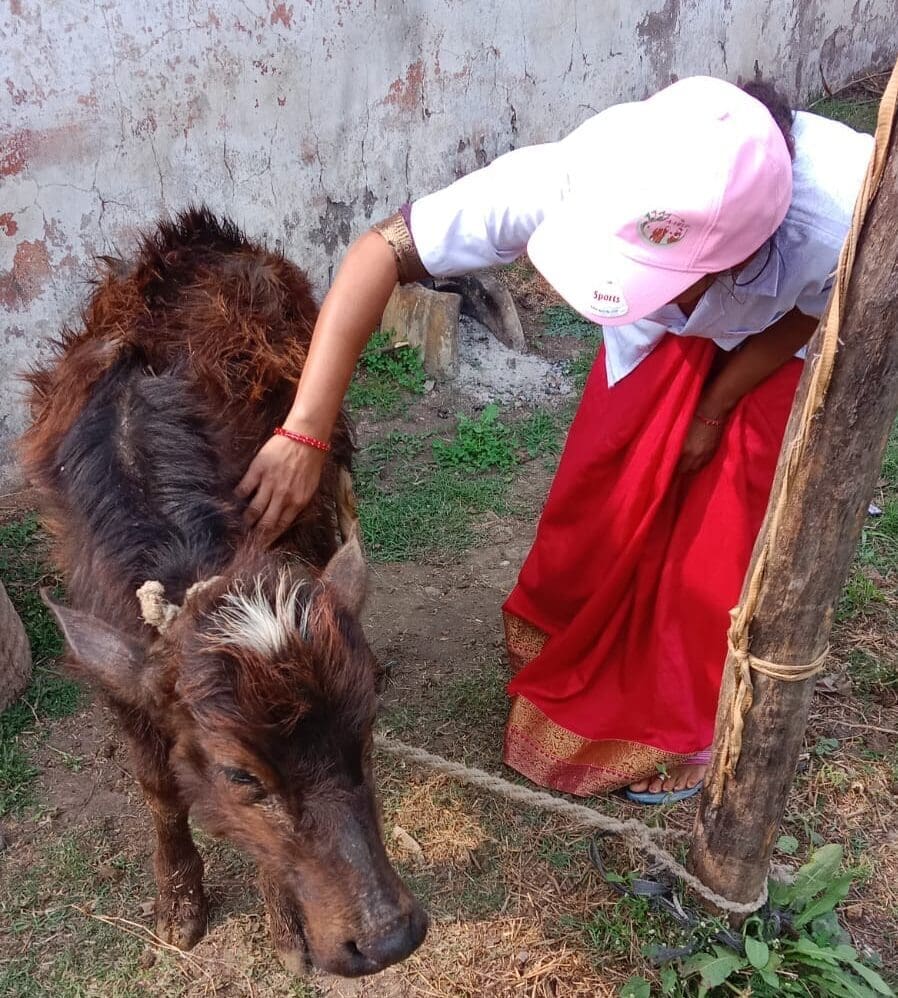
Agriculture extension agent Archana Meena tends to her livestock. (Photo Courtesy of Archana Meena and Digital Green)
With the incorporation of AI, the cost of extension is expected to be as low as $0.35 per farmer.
It also provides benefits for livestock farmers, whose cows, buffalos, pigs, and sheep get infected by skin diseases or pests in their hooves, also traced back to changing climate patterns, said Archana Meena, an agriculture extension agent who raises livestock.
She supports 1,500 farmers in animal husbandry in and around Silari village, about 60 miles (100 kilometers) northeast of Damle’s village.
“The benefit of the app is that whenever a farmer sees a new disease, the information can get out instantaneously to the others,” Meena said.
“And they can also learn newer techniques to avoid some of these diseases.”
An Orchestra Achieving Harmony
Damle believes the app is a good step forward in exposing farmers to more natural approaches. Small steps can have a bit impact down the line, she said.
“I have a 14-year-old daughter who wants to become a veterinarian, and a 9-year-old son whose dreams keep changing—either he wants to join the army, or set up his own business,” she said with a laugh. “I worry about them. But I also have hope, because if we adults start taking measures today to fight climate change and preserve the soil, then we can give them a better future.”
One of the ways to do that is to connect the Indian agricultural ecosystem into a collaborative whole, Digital Green believes.
“There is a lot that has to happen,” agreed Digital Green’s Nandita Mishra. “It’s like an orchestra played by people with various skills all trying to achieve the same harmony. But if we can do it, it will change millions of lives for the better.”
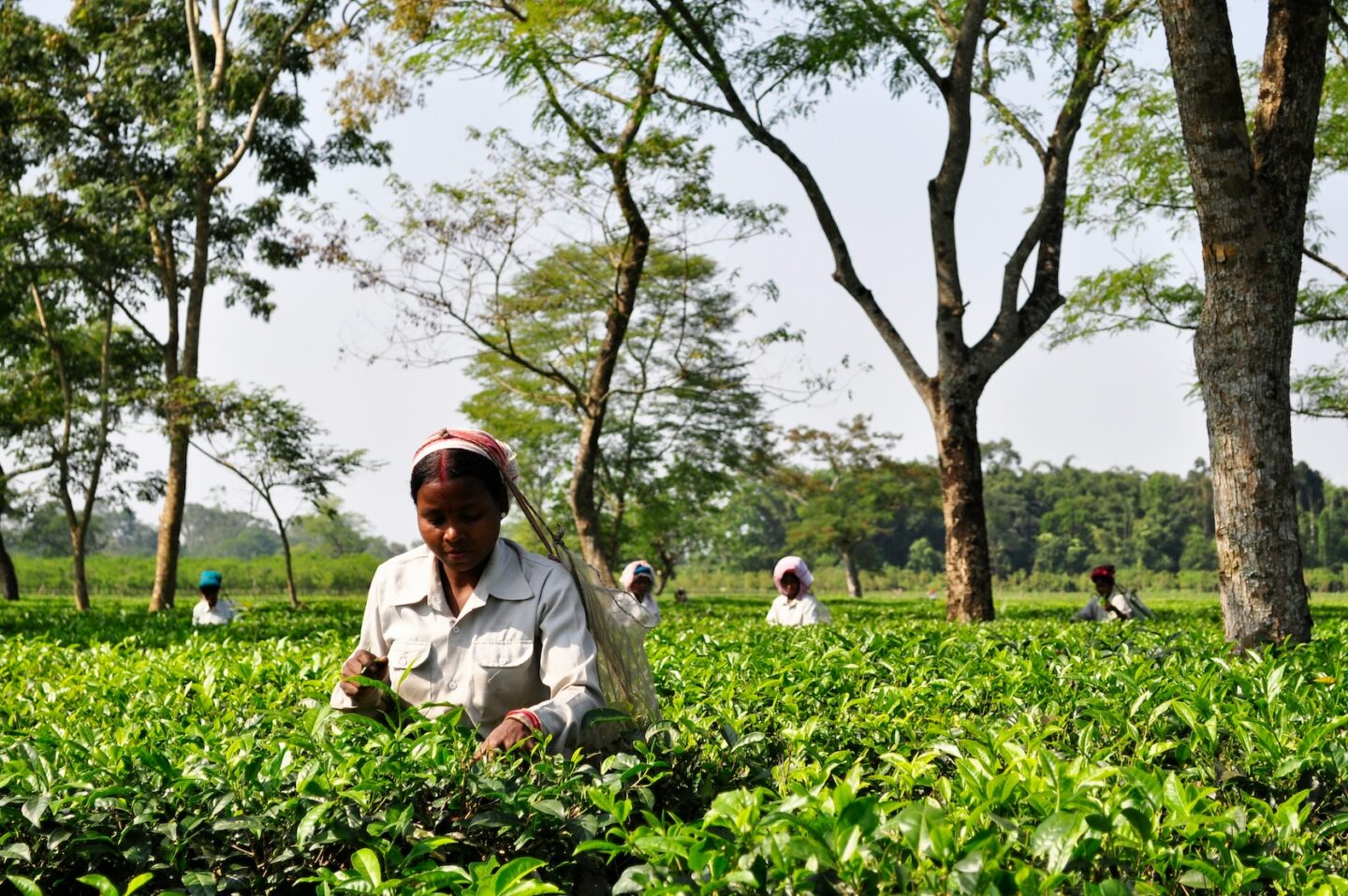 Women farmers plucking tea shoots in Assam North East, India. (Photo Credit Amit Ranjan, Unsplash)
Women farmers plucking tea shoots in Assam North East, India. (Photo Credit Amit Ranjan, Unsplash)
